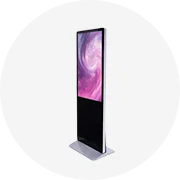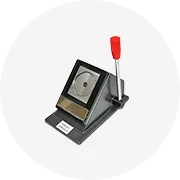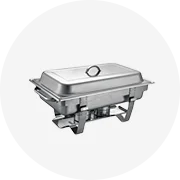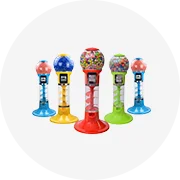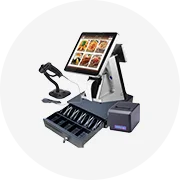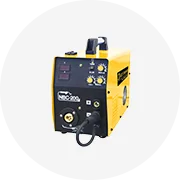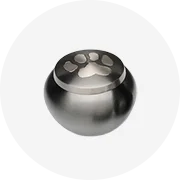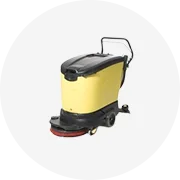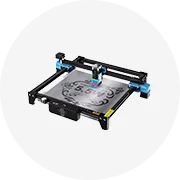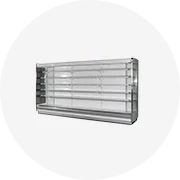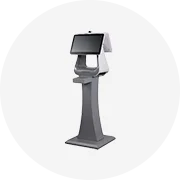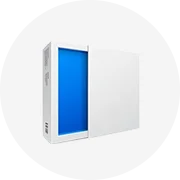Types of Grid Panel Stand
A grid panel stand is a versatile merchandising display made of steel wire bent into a grid pattern, designed to showcase products in retail environments. Also known as grid walls or grid displays, these fixtures have become essential tools across various industries including clothing stores, gift shops, and convenience stores. Their adaptable nature makes them suitable for practically any retail setting, enhancing product visibility and improving the customer shopping experience.
Grid Panel Wall
Wall-mounted panels that maximize vertical display space in retail environments. Ideal for aisles and perimeter displays.
Best for: Maximizing wall space, creating organized product displays
Freestanding Grid Panels
Self-standing units with weighted bases for stability, allowing flexible placement anywhere on the sales floor.
Best for: Point-of-sale displays, temporary promotions
Tabletop Grid Displays
Compact grid panels designed for counter or table surfaces, perfect for displaying smaller merchandise items.
Best for: Jewelry, accessories, small retail items
Rotating Grid Displays
Dynamic displays that rotate to showcase products from multiple angles, maximizing visibility and space efficiency.
Best for: Maximizing exposure of featured products
Grid Panel Accessories
Various attachments including hooks, shelves, baskets, and sign holders that enhance the functionality of grid panel systems.
Best for: Customizing displays for specific merchandise types
Expert Tip: Combine different types of grid panel stands to create a cohesive retail display system that maximizes both wall and floor space while maintaining a consistent visual aesthetic throughout your store.
Specifications and Maintenance of Grid Panel Stand
Understanding the specifications of grid panel stands is crucial for selecting the right display solution for your retail space. Manufacturers provide detailed information to help buyers make informed decisions based on their specific needs.
| Specification | Common Ranges | Considerations |
|---|---|---|
| Size and Height | 4'×8' panels; 4'-6' heights | Consider available floor/wall space and merchandise size |
| Material | Steel, wire, chrome | Steel offers durability; chrome provides aesthetic appeal |
| Orientation | Square, rectangular | Affects display area and product arrangement options |
| Panel Configuration | 1, 2, 3, or 4 panels | More panels provide greater display capacity |
| Weight Capacity | 50-100 pounds | Essential for determining suitable merchandise types |
| Base Design | Pedestal, rolling, tripod | Affects stability and mobility of the stand |
Essential Maintenance Practices
Proper maintenance extends the lifespan of your grid panel stands and preserves their appearance. Implement these regular maintenance procedures to protect your investment:
Regular Cleaning
Clean grid panels frequently using a soft cloth and mild soap solution to remove dust and maintain appearance. Avoid harsh chemicals that might damage finishes.
Damage Inspection
Routinely examine for signs of wear, bent wires, or unstable connections. Promptly repair or replace damaged components to maintain safety and functionality.
Attachment Security
Check all panel attachments, connections, and fasteners regularly. Tighten loose screws and ensure panels remain securely attached to their bases.
Important Safety Notice: Never exceed the manufacturer's recommended weight capacity for your grid panel stand. Overloading can lead to structural failure, product damage, and potential safety hazards for customers and staff.
Rust Prevention Tip: For metal grid panels, immediately address any scratches in the protective coating. Apply touch-up paint or a rust inhibitor to exposed metal to prevent corrosion, especially in humid environments.
How to Choose Grid Panel Stand
Selecting the ideal grid panel stand requires careful consideration of your specific retail needs. Use these key factors to guide your decision-making process:
Purpose Assessment
Determine whether you need displays for permanent retail fixtures, temporary trade show exhibits, or seasonal promotions. Different purposes demand different stand types.
Key question: Will this be a permanent or temporary display?
Space Optimization
Measure your available space and consider traffic flow around the display. Select a size that maximizes product visibility without creating congestion.
Key question: What are the dimensions of my intended display area?
Product Compatibility
Consider the weight, size, and presentation needs of your merchandise. Ensure your chosen grid panel can properly support and showcase your specific products.
Key question: What types of products will I display?
| Selection Factor | Options to Consider | Best For |
|---|---|---|
| Mobility Needs | Fixed, portable, wheeled bases | Wheeled: frequently changing layouts Fixed: permanent displays |
| Accessory Compatibility | Standard or proprietary grid spacing | Standard: wider selection of accessories Proprietary: specialized displays |
| Budget Considerations | Basic, mid-range, premium | Basic: temporary displays Premium: high-traffic permanent fixtures |
| Aesthetic Requirements | Chrome, colored, custom finishes | Chrome: modern retail Custom: brand-specific environments |
Expert Selection Advice: Consider purchasing a few additional grid panel accessories beyond your immediate needs. This allows you to refresh your displays periodically and adapt to changing merchandise without requiring a complete system replacement.
How to DIY and Replace Grid Panel Stand
Installing a grid panel stand is a straightforward process that most retailers can accomplish without professional assistance. Follow these detailed steps for a successful installation:
Select a wall free from obstructions that provides sufficient space for your grid panel. Gather all necessary tools including a level, drill, measuring tape, and pencil. For concrete walls, use a masonry drill bit; for drywall, locate the wall studs where the grid will be attached for maximum stability.
Measure the exact dimensions of your grid panel. Use a pencil to mark the four corners on the wall where the panel will be mounted. Employ a level tool to ensure your markings are perfectly horizontal and vertical, making adjustments as needed.
If using a pre-made panel, verify it matches your wall measurements. For grid panel kits, assemble according to manufacturer instructions. Place the panel on a flat surface and compare against wall measurements. If necessary, use a metal-cutting saw or angle grinder to trim the frame for a perfect fit.
For drywall installation, drill pilot holes through the frame's corners and into the wall studs. Secure the panel using appropriate screws, ensuring they penetrate the studs. For concrete or masonry walls, drill holes for wall anchors, insert the anchors, then secure the panel with screws. Double-check that the panel is level and all connections are tight.
Installation Tip: For freestanding grid panel stands, ensure the base is properly assembled and weighted according to manufacturer specifications. On uneven floors, use adjustable feet or floor levelers to prevent wobbling and maintain stability.
Safety Note: Always verify weight limits for wall-mounted grid panels. Exceeding these limits can cause the panel to pull away from the wall, potentially causing injury or property damage. When in doubt, use additional mounting points or select a freestanding option instead.
Questions and Answers
Cleaning a grid panel stand is straightforward and requires minimal supplies. Use a microfiber cloth dampened with a mild soap and water solution to gently wipe down all surfaces of the panel. For stubborn dirt or grime, a non-abrasive all-purpose cleaner can be used. Always avoid harsh chemicals or abrasive materials that could damage the finish. After cleaning, thoroughly dry the panel with a clean cloth to prevent rust formation, especially on steel panels. Regular cleaning not only maintains appearance but also extends the lifespan of your display.
Grid panels offer several advantages over traditional shelving systems:
- Space Efficiency: Grid panels maximize vertical and horizontal space by allowing displays on both sides
- Visibility: Products are more visible and accessible from multiple angles
- Flexibility: Accessories can be quickly repositioned without tools or specialized hardware
- Adaptability: The same grid panel can display different product types by simply changing accessories
- Air Circulation: The open design allows better airflow around products
Traditional shelving offers greater weight capacity but lacks the flexibility and visual appeal of grid panel systems for most retail applications.
Yes, grid panel stands can be used outdoors, but you must select weather-resistant models specifically designed for exterior use. Look for panels with galvanized steel, stainless steel, or specialized weather-resistant coatings that prevent rust and corrosion. Even with weather-resistant panels, it's advisable to provide some protection from direct exposure to rain and harsh elements. These panels are excellent for outdoor markets, festivals, garden centers, and temporary event displays. Always check the manufacturer's specifications regarding outdoor suitability before purchasing.
Grid panel stands are highly customizable to meet specific display requirements. Options include:
| Customization Type | Options Available | Best Applications |
|---|---|---|
| Configuration | H-stands, T-stands, wall units, gondolas | Adapting to specific retail floor plans |
| Accessories | Hooks, shelves, baskets, racks, sign holders | Displaying specific product types |
| Lighting | Clip-on lights, integrated LED systems | Highlighting featured products |
| Finishes | Custom colors, powder coating, vinyl wraps | Matching brand aesthetics |
Many suppliers also offer custom-sized panels for unique spaces and special projects.
Yes, most grid panel stands come with manufacturer warranties, though coverage periods and terms vary significantly between manufacturers. Standard warranties typically range from 1-5 years and cover manufacturing defects, structural issues, and premature finish failure under normal use conditions. Premium quality grid panels may offer extended warranties up to 10 years. Be aware that warranties typically don't cover damage from improper use, overloading, or environmental damage. Always register your product upon purchase and retain your receipt as proof of purchase date. For warranty claims, contact the manufacturer or supplier directly.















































